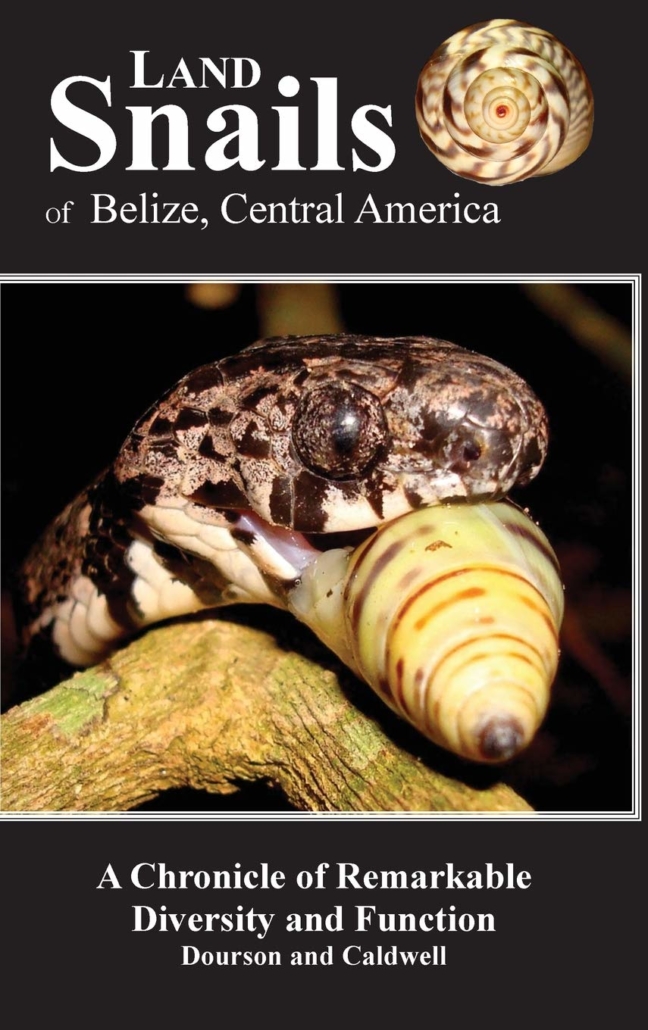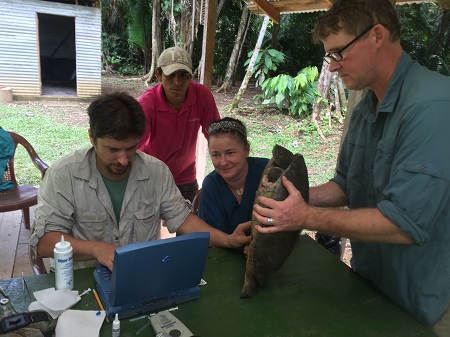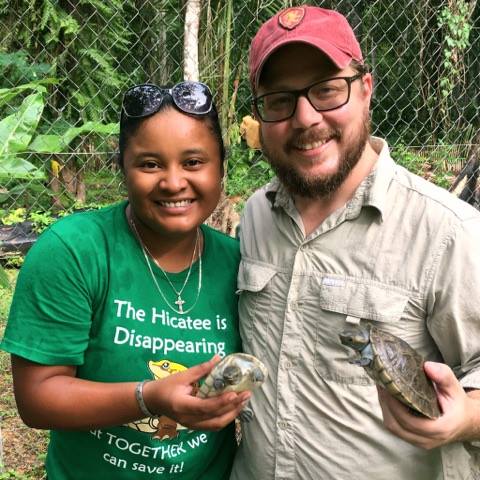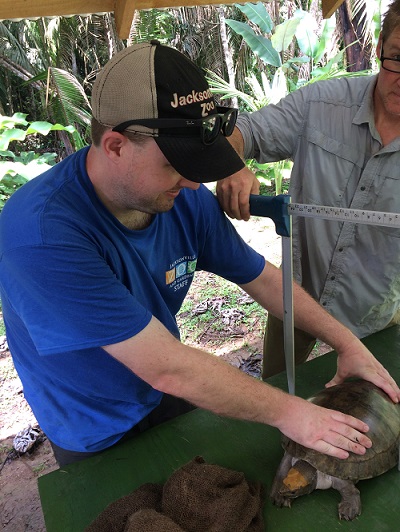TSA-NAFTRG Turtle Survey at BFREE
Last month, the BFREE reserve became the focus of a mark-recapture survey by the Turtle Survival Alliance’s – North American Freshwater Turtle Research Group (TSA-NAFTRG). After a year’s delay due to the COVID pandemic, the team was thrilled to get approval from Belize Fisheries Department to implement their research.
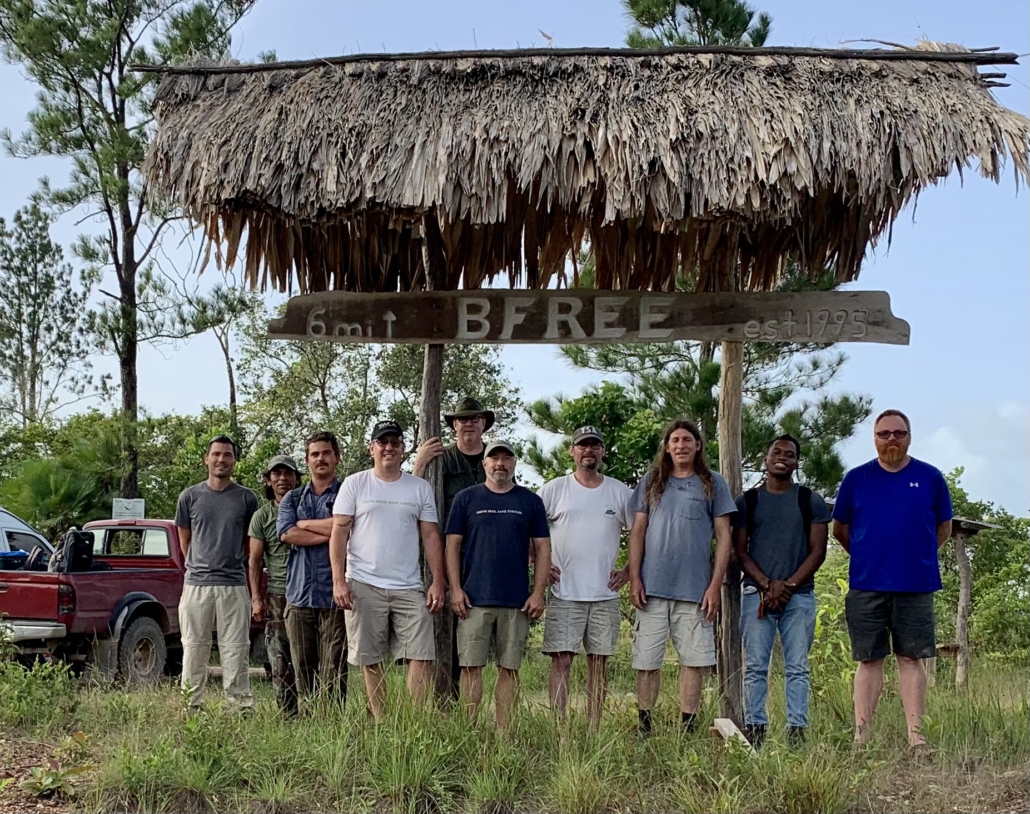
The TSA-NAFTRG team’s goals included establishing safe protocols for surveying freshwater turtles on the property, training BFREE staff on those methods, locating appropriate long-term survey sites and completing an initial assessment. Their timing couldn’t have been better: with the onset of rainy season, creeks were flowing, puddles formed regularly and turtles were everywhere.
The TSA-NAFTRG team of Eric Munscher, Arron Tuggle, Andy Weber, Collin McAvinchey, and J. Brian Hauge were joined by BFREE staff, Tom Pop, and Jonathan Dubon as well as BFREE Fellowship Program Alum, Jaren Serano, who helped with the survey just prior to returning to the U.S. for grad school. TSA COO, Andrew Walde, and TSA Board Member/ WCS Coordinator for Turtle Conservation, Brian Horne, were also present and able to spend time in the field during the survey.
This initial assessment was deemed an incredible success with 227 turtles captured, marked, measured and safely released. Turtles found included Meso-American Slider, White-lipped Mud Turtle, Tabasco Mud Turtle, Scorpion Mud Turtle, Mexican Giant Musk Turtle, Central American Snapping Turtle, and the Furrowed Wood Turtle – representing seven of Belize’s nine freshwater turtles. (Fun fact: the Central American River turtle/ Hicatee is the only Belizean freshwater turtle that does not naturally occur on the BFREE reserve!)
We are grateful to the TSA-NAFTRG team for supplying us with the expertise and field equipment needed to ensure this survey continues and we look forward to their return trip next July!
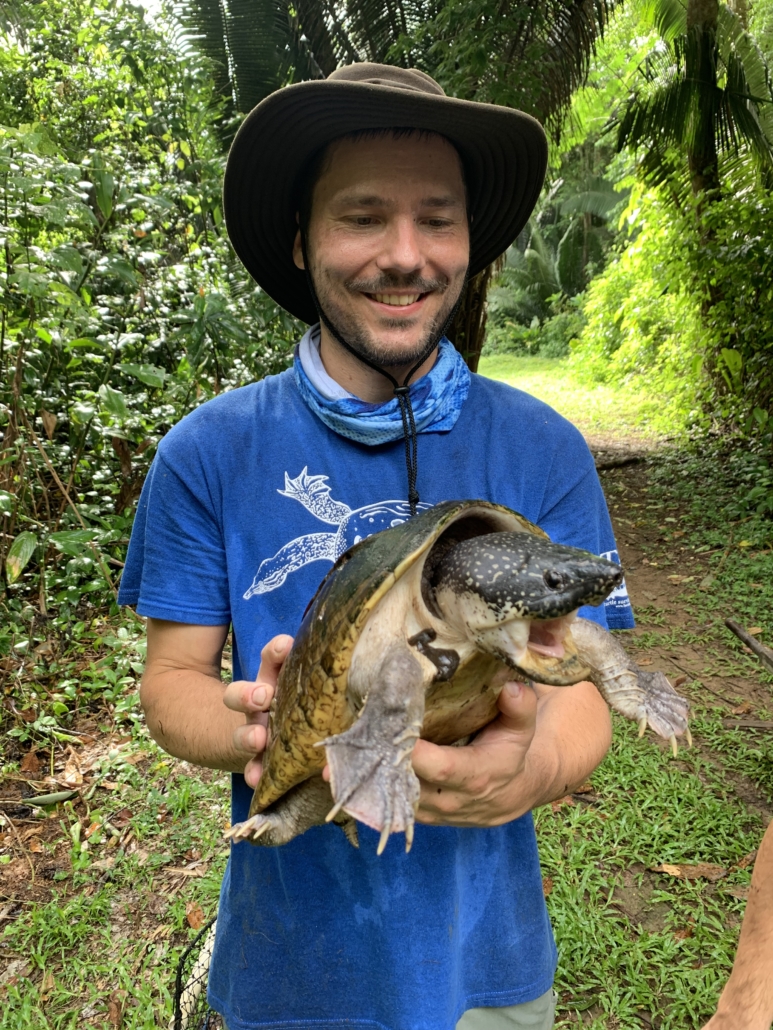
Andy Weber with a Northern Giant Musk Turtle 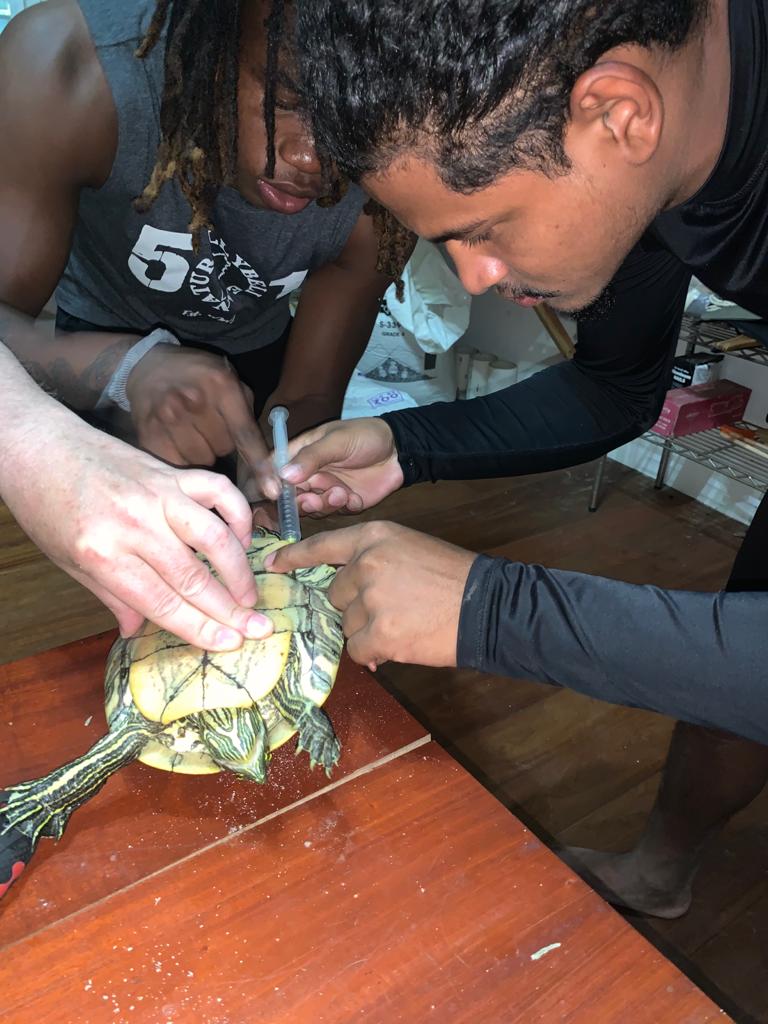
Jaren Serano and Jonathan Dubon insert a PIT-tag into a Mesoamerican Slider 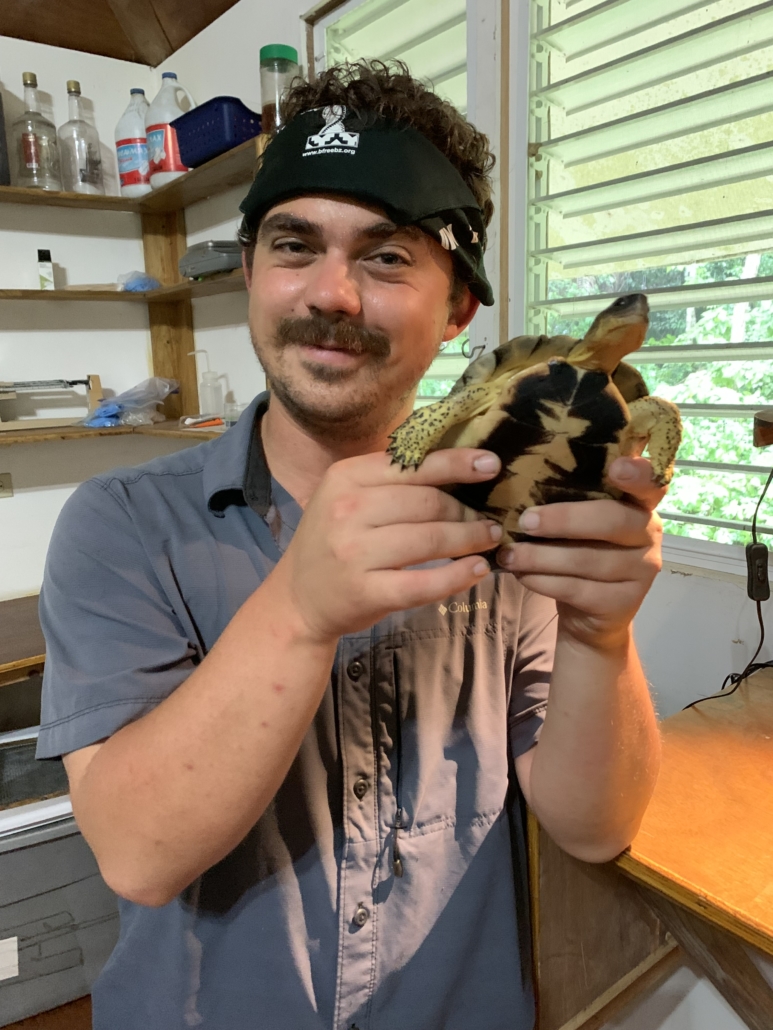
Collin McAvinchey with a Furrowed Wood Turtle

Back Row – L to R – Andy, Jacob, Heather, Brian, and Arron
Front Row – L to R – Collin, Jaren and Eric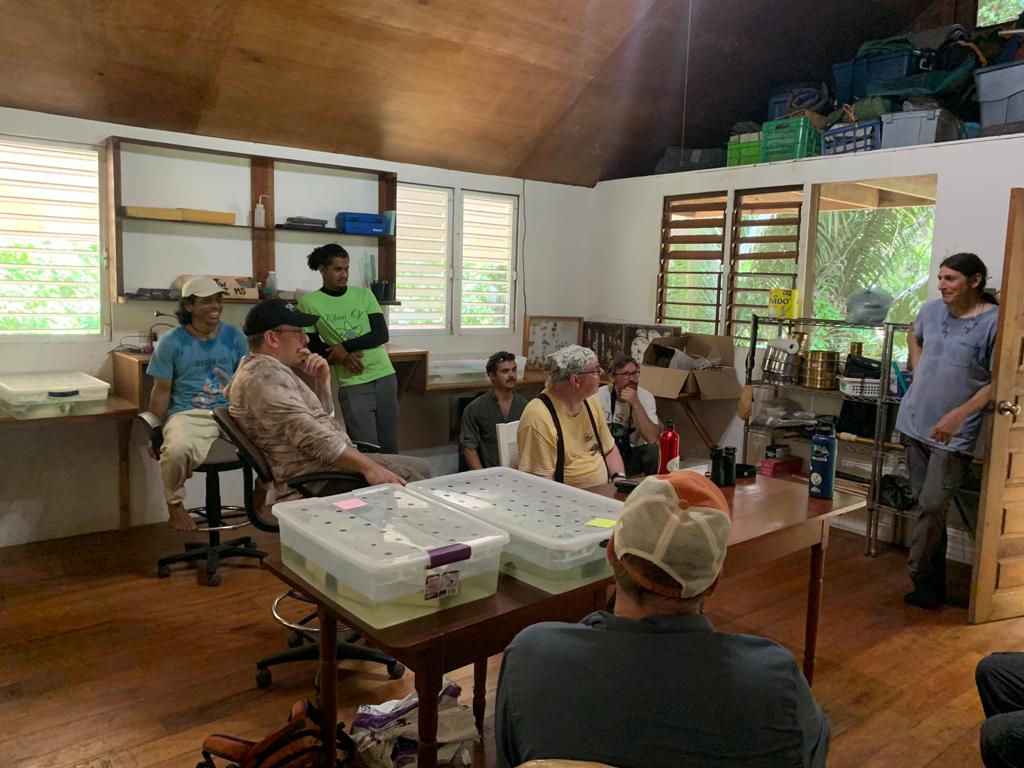
Jacob introduces the team to the BFREE Lab
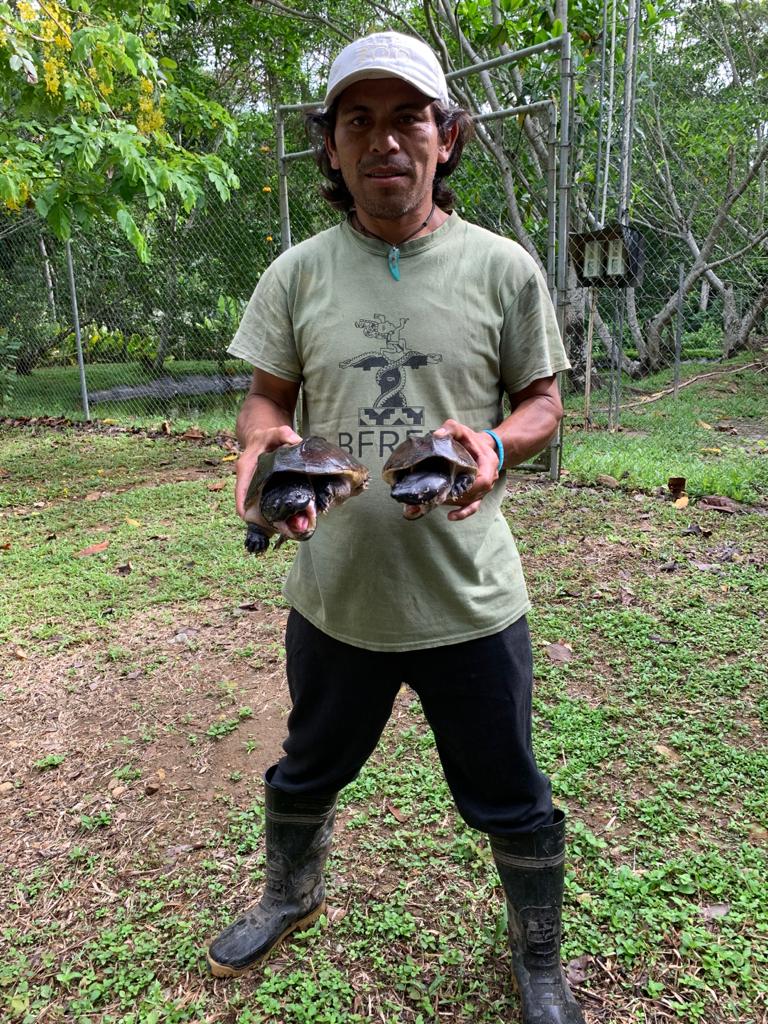
Tom Pop with two Northern Giant Musk Turtles 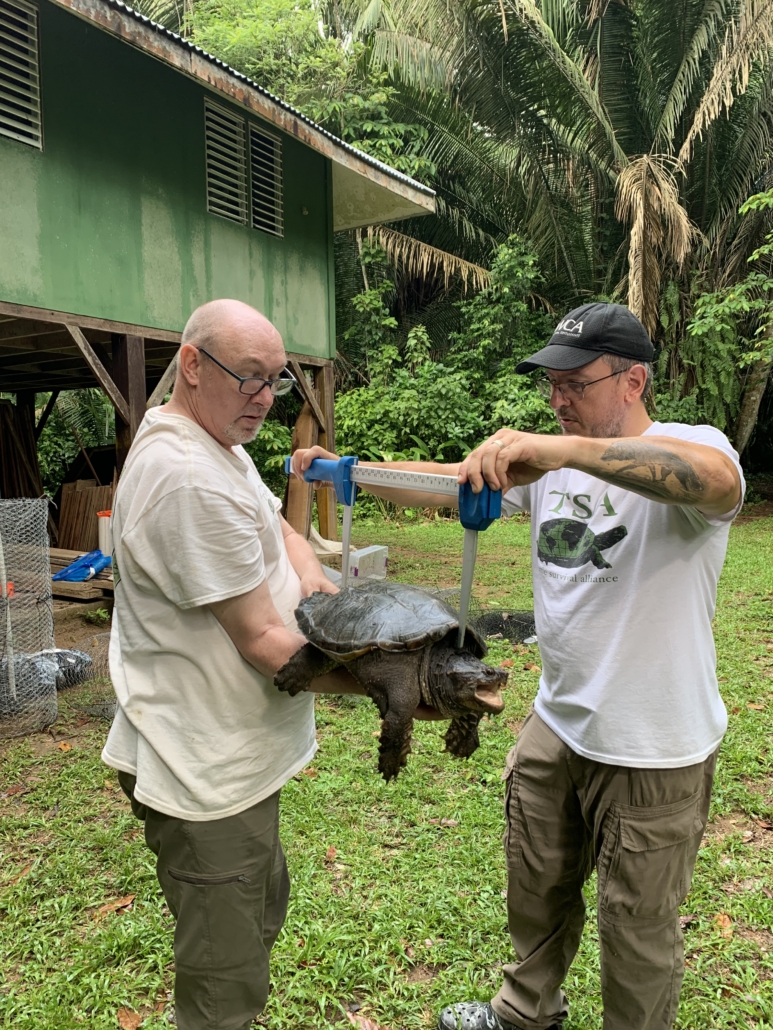
Brian Hague and Eric Munscher measure a female Central American Snapping Turtle 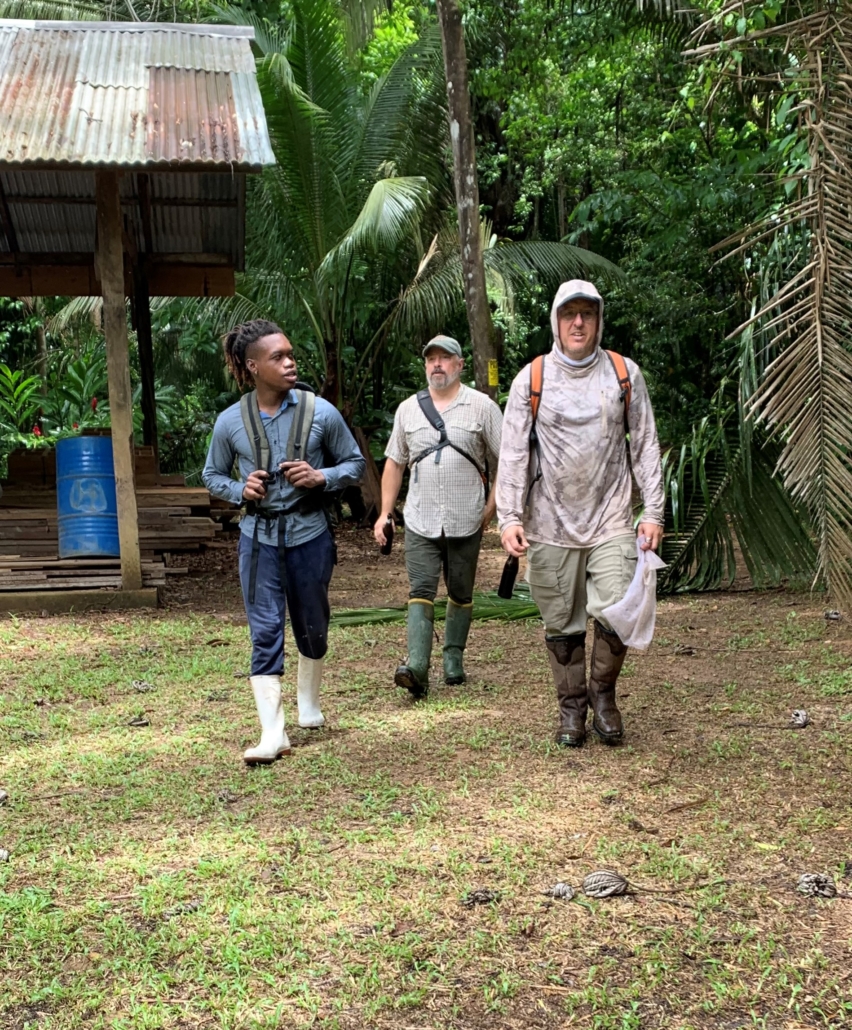
Jaren Serano, Arron Tuggle and Eric Munscher head out to check one of their survey areas

